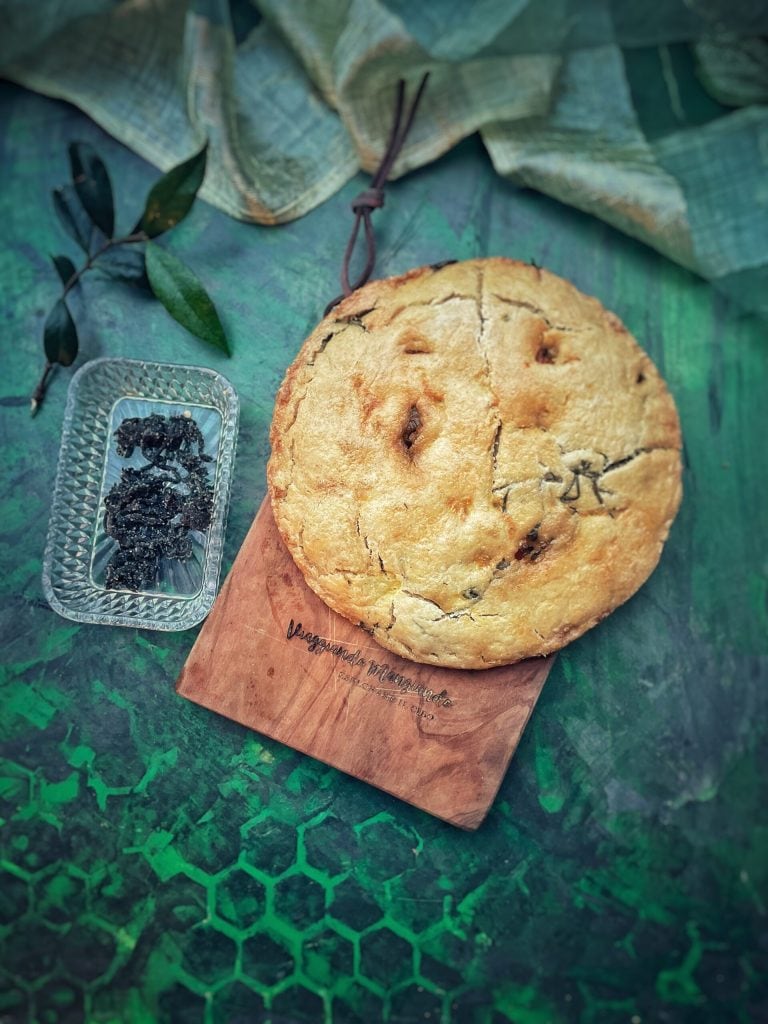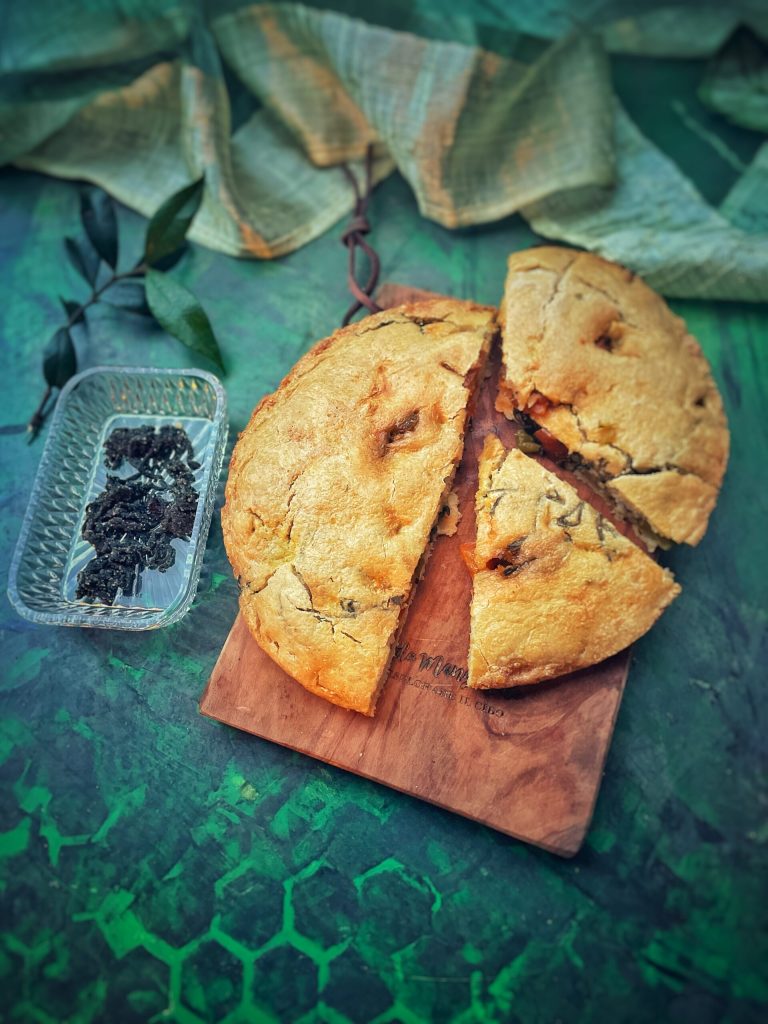The Galician seaweed empanada is a modern and regional variation of the classic Galician empanada (Galicia, Spain), incorporating edible seaweeds — particularly Atlantic seaweeds harvested along the Galician coasts.
Although it doesn’t have as ancient a history as tuna or meat empanadas, it represents an evolving maritime gastronomic tradition.
Galician empanadas date back to the Middle Ages and are linked to the cuisine of the pilgrims of the Camino de Santiago. Originally a travel dish, they enclose a filling between two layers of dough.
Over time, Galicia developed a wide variety of empanadas: with tuna, octopus, mussels, codfish, and vegetables.
The seaweed empanada originated in the context of promoting local seaweeds starting from the 1990s, with growing attention to sustainable and healthy marine products.
🧂 Typical seaweeds used:
Codium (“ramallo de mar” seaweed) – as in my case
Galician Wakame
Ulva lactuca (sea lettuce)
Himanthalia elongata (sea spaghetti)
The seaweeds are sautéed with onion, garlic, peppers, tomatoes and sometimes paired with seafood (mussels, clams) or seasonal vegetables.
All enclosed in a yeasted dough made from wheat flour and olive oil.
What follows is the traditional recipe, in the video you’ll find the simplified gluten-free version.

- Difficulty: Medium
- Cost: Medium
- Rest time: 2 Hours
- Preparation time: 10 Minutes
- Portions: 4People
- Cooking methods: Oven
- Cuisine: Spanish
- Seasonality: All seasons
Ingredients
- 3 1/2 cups flour
- 3 oz lard (or shortening)
- 3 1/2 tbsp extra virgin olive oil
- 1 oz fresh yeast
- 1/4 cup white wine
- 1/4 cup warm water
- 1 tsp salt
- 2 eggs
- 2 onions
- 2 peppers
- 1 oz codium seaweed
- 1 tsp pimenton (or paprika)
- to taste parsley
- to taste extra virgin olive oil
- to taste pepper
Tools
- 1 Baking Pan 9 inches
Steps
Dissolve the fresh yeast in warm water.
In a large bowl, mix the flour with the salt.
Add the lard, oil, white wine, egg (1), and the dissolved yeast.
Knead until you obtain a smooth and homogeneous mixture.
Cover with a damp cloth and let it rise for about 1 hour, or until doubled in size.
In a pan, heat the oil and sauté the onions and peppers over medium-low heat until soft.
Add the chopped seaweed and cook for another 5 minutes.
Season with pimentón or paprika, parsley, and pepper.Allow the filling to cool to room temperature.
Divide the dough into two equal parts.
Roll out one part on a floured surface and place it on a baking tray lined with parchment paper.
Spread the filling evenly over the base, leaving a 3/4 inch border.
Roll out the other half of the dough and cover the filling.
Seal the edges by pressing with your fingers or a fork.
Make a small hole in the center to allow steam to escape.
Brush the surface with beaten egg.
Preheat the oven to 350°F.
Bake the empanada for about 40-45 minutes, or until it is golden and crispy.
Let it cool slightly before serving.
FAQ (Questions and Answers)
What is codium seaweed and where can I buy it?
🌿There are over 100 species of Codium, each with unique flavor, color, and texture. It’s also called “dead man’s fingers” because of the branching stalks that resemble fingers.
This seaweed is also found along the Mediterranean coasts and is harvested seasonally.
🖥You can purchase it from the website www.algaulisse.it
with discount code ❌viaggiandomangiando❌

